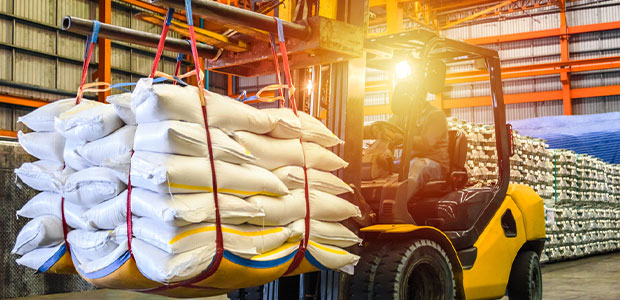
Eliminate Five Leading Causes of Material Handling Injuries with Training
Training should teach employees how to avoid the most common material handling injuries.
- By Karen D. Hamel
- Oct 01, 2021
Much of a new material handling an employee’s training tends to focus around how to safely operate a forklift or powered industrial truck. Recognizing safe clearances, navigating turns, avoiding pedestrians and securing loads are all learned skills that help operators to maneuver mechanical devices safely. However, training should also teach them how to avoid the most common material handling injuries.
Material handling incidents are the most frequent cause of workplace injuries, according to The Travelers Companies. Increasing awareness through training can help prevent incidents, reduce reportable injuries and promote safer working conditions.
Sprains and Strains
It is no secret that sprains and strains are the most common types of worktime injuries. Material handlers in manufacturing and retail settings experienced nearly 40 percent of the 295,180 reported sprain and strain injuries in 2019, according to the Bureau of Labor Statistics.
Even when carts, conveyors, dollies, cranes and other mechanical aids are available, material handlers who are not properly trained still use inappropriate lifting methods and move items that are too bulky, heavy or awkward for one person to lift.
Back injuries are the most common type of sprain or strain. More than 111,000 back injuries occur each year with an average recovery time of 57 days per injury, according to the National Safety Council.
Provide appropriate ergonomic training that focuses on proper lifting techniques for the types of materials that they will be handling, including lifting over the shoulders, placing objects below knee level and handling oversized loads. Incorporating daily warmup or stretching programs before each shift can also help to minimize sprain and strain injuries.
Slips, Trips and Falls
Packing materials, strapping, debris, uneven floor surfaces and spilled liquids all contribute to slips, trips and falls to the same level. In addition to sprains and strains, slips, trips and falls can also cause bruises, cuts, muscle tears and fractures.
Some issues, such as uneven floor surfaces may require maintenance or construction work to repair and eliminate a floor safety hazard. However, most slip, trip and fall injuries in material handling areas can be eliminated by implementing good housekeeping procedures.
Good housekeeping training may include policies for keeping aisles clear, ensuring that boxes, bins and containers are fully in racking systems, sweeping work areas, cleaning up spills immediately and placing spent packing materials in trash cans or recycling bins. Providing all necessary tools to perform good housekeeping tasks and making them readily available in work areas helps to reinforce this training.
This article originally appeared in the October 2021 issue of Occupational Health & Safety.